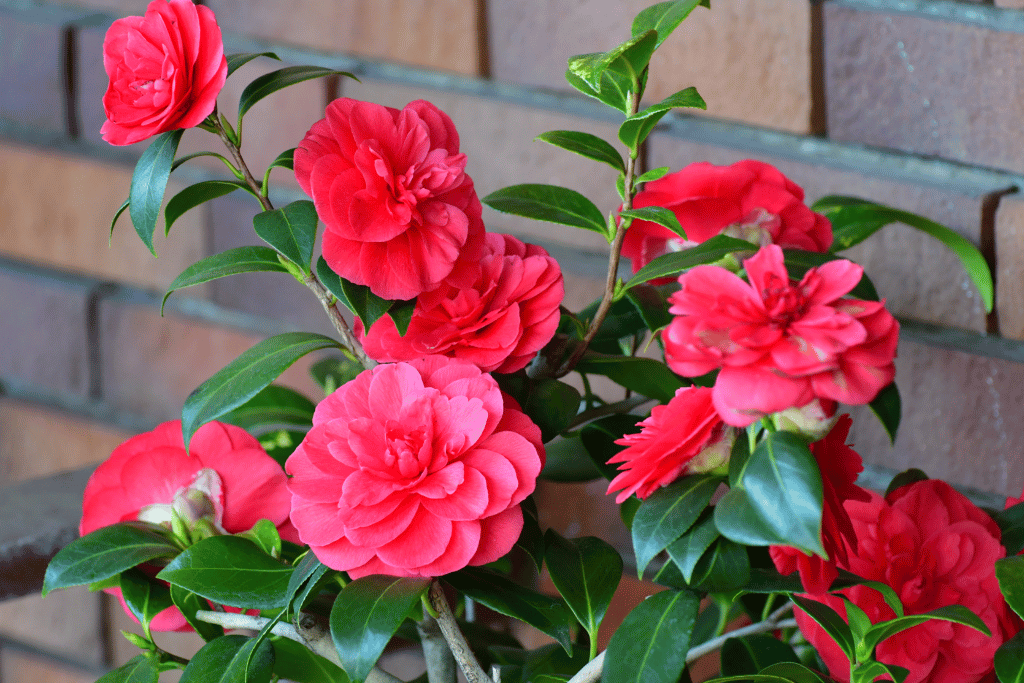A whole range of plant species look like birds, and it’s difficult to give an exact number as many species are still being discovered. Apart from being fun and fascinating to look at, these plants serve critical ecological functions. Plants that look like birds attract bird pollinators or use their similarity to scare off herbivores and predators.
Not all plant species that mimic birds can be grown at home due to environmental requirements. Still, in this article, we’ll introduce you to 10 different plants that look like birds, and you’ll be stunned by the diversity of forms and colors that mother nature created.
Why Do Plants Look Like Birds?
Plants develop to mimic birds for a few reasons. The most common cause is due to pollination. Plants that have evolved to include bird-like shapes and colors do so to attract bird pollinators. By mimicking a bird, the plant can mislead the bird into thinking it’s a mate, which results in a bird landing on the flower and transferring pollen.
In addition to pollinating, another reason why plants look like birds is to assist with seed dispersal. Plants with flowers that look like birds have the ability to allure birds to eat their fruit and seeds. After the birds have eaten the fruit containing seeds, they disperse them through their droppings.
When it comes to deterring herbivores and predators, plants that look like birds have the ability to scare off any potential threats. So, if you have a problem with any pests, such as small mammals or even aphids or caterpillars growing bird-looking plants, to could provide your garden with a solution.
All in all, plants that look like birds are an outstanding example of how organisms can transform to survive in their environment.
Now you are aware of why plants can look like birds, let’s take a look at which plants you can add to your garden.
1. Bird Of Paradise- Strelitzia reginae
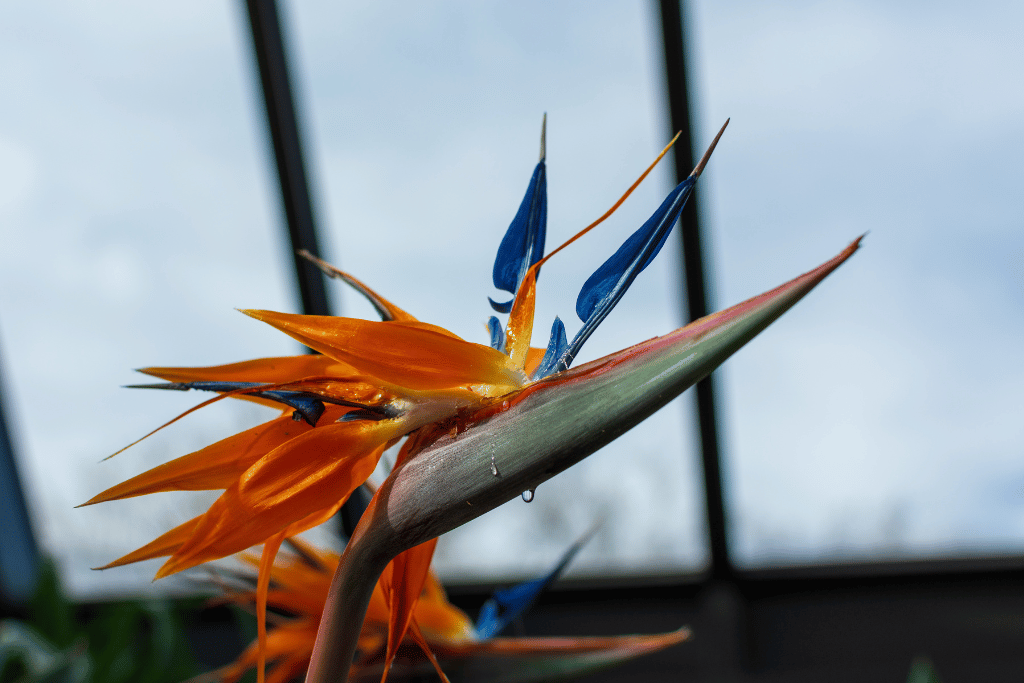
If you have ever seen a bird of paradise, you will know that this striking plant looks like a tropical bird that has just landed in your backyard! The Strelizia reginae (scientific name) showcases large foliage that is similar to the banana leaf.
The distinctive flowers look like they have been plucked right off a bird’s head! The bird of paradise is also known as the Crane flower because its flowers look like a crane with a bright orange beak.
Not only is the bird of paradise pest resistant and stunning to look at, but it is also super easy to care for. It thrives in the summer sun and is not fussy when it comes to soil conditions.
| Common Name | Bird of Paradise, Crane Flower |
| Scientific Name | Strelitzia reginae |
| Origin | South Africa |
| Family | Strelitiziaceae |
| Type | Perennial |
| USDA Hardiness Zone | 9-11 |
| Temperature | Prefers 50-72F (10-22C) Can tolerate as low as 24F (-4C) |
| Humidity | 40-70% |
| Soil | Well-draining soil, pH 6-7.5 |
| Light | Full Sun to Part shade |
| Fertilizer | 10-10-10 NPK every two weeks during the growing season |
2. Parrot Flower- Impatiens psittacina
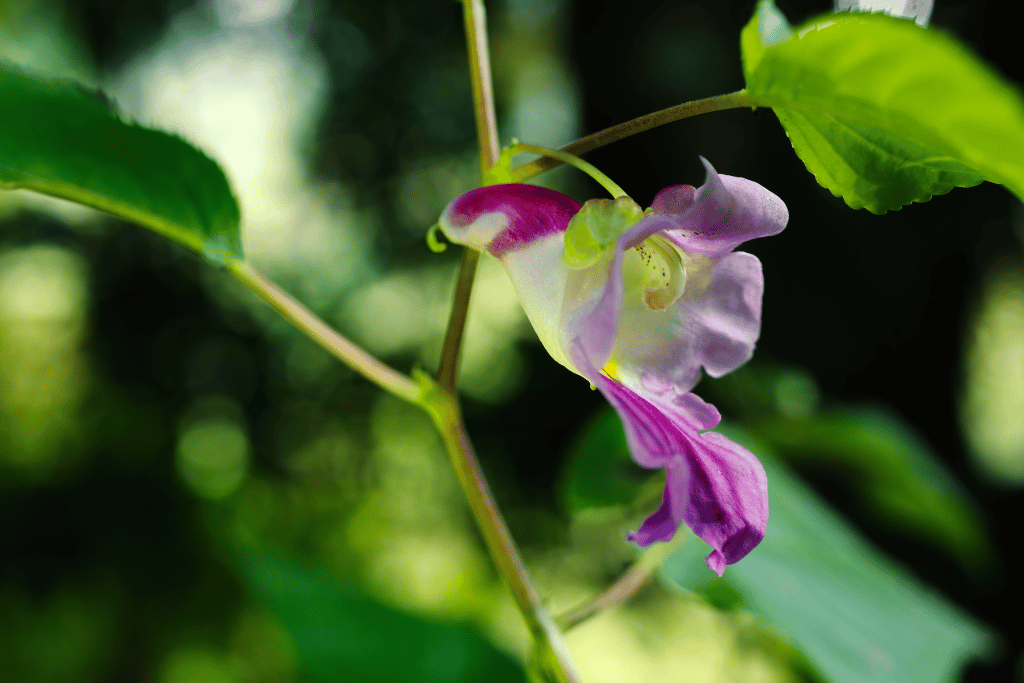
Recognized for its uniquely shaped petals, the parrot flower has a flashy appearance. This little gem is a type of impatiens plant and attracts pollinators and butterflies to your garden.
In fact, the parrot flower is one of the only impatiens plants that has developed to be pollinated by birds instead of insects. It’s like a parrot luring in its mates to check out its colorful feathers!
Don’t let its sassy appearance fool you; the Parrot flower is a relatively low-maintenance plant that loves low light conditions and a little feed once in a while.
So, if you are looking for a plant that will attract a range of pollinators and is easy to care for the parrot flower, it is an excellent choice!
| Common Name | Parrot Flower |
| Scientific Name | Impatiens psittacina |
| Origin | Asia- Thailand and Mayanmar |
| Family | Balsaminaceae |
| Type | Perennial |
| USDA Hardiness Zone | 10-11 |
| Temperature | Prefers 60-80F (16-27C) Can tolerate as low as 40F (4C) |
| Humidity | 50-70% |
| Soil | Well-draining soil, pH 6.0 -7.0 |
| Light | Full Shade to Part shade |
| Fertilizer | 10-10-10 NPK- Twice during the growing season |
3. Swan plant- Gomphocarpus physocarpus
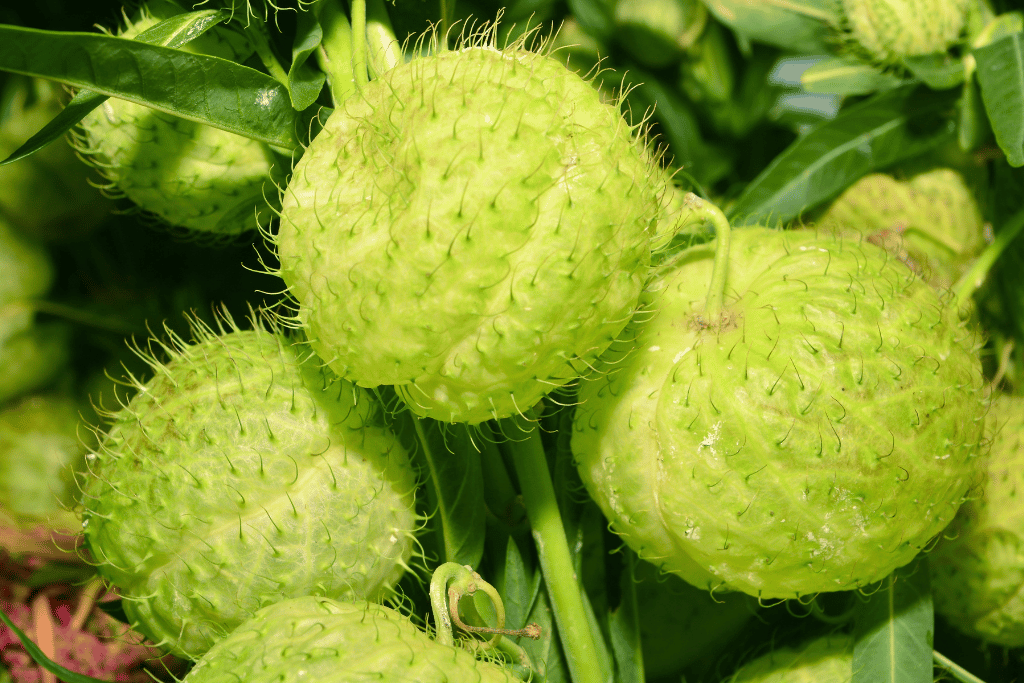
The swan plant has a quirky appearance, and while its flowers don’t exactly look like a swan, the seed heads resemble the formation of a swan’s head.
The delicate flowers are white or pale pink, shaped like a star, and clustered together in large round inflorescences. Besides its attractive shape, the flowers of the Swan plants are an attraction to butterflies and bees which will enhance the pollination in your garden.
If you’re searching for a touch of whimsy and beauty in your garden, the Swan plant might just be the ticket!
| Common Name | Swan Plant, Balloon Plant |
| Scientific Name | Gomphocarpus physocarpus |
| Origin | Africa. You can find it in Asia, Australia, and the Americas. |
| Family | Apocynaceae |
| Type | Perennial / Annual |
| USDA Hardiness Zone | Grown as an annual in most parts of USA. Grown as a perennial in 9-11 |
| Temperature | 65-85F (18-30C) |
| Humidity | 40-60% |
| Soil | Well-draining soil, pH 6.0 -7.5 |
| Light | Full Sun to Part shade |
| Fertilizer | 10-10-10 NPK- Twice during the growing season |
4. Green Bird Flower –Crotalaria cunninghamii
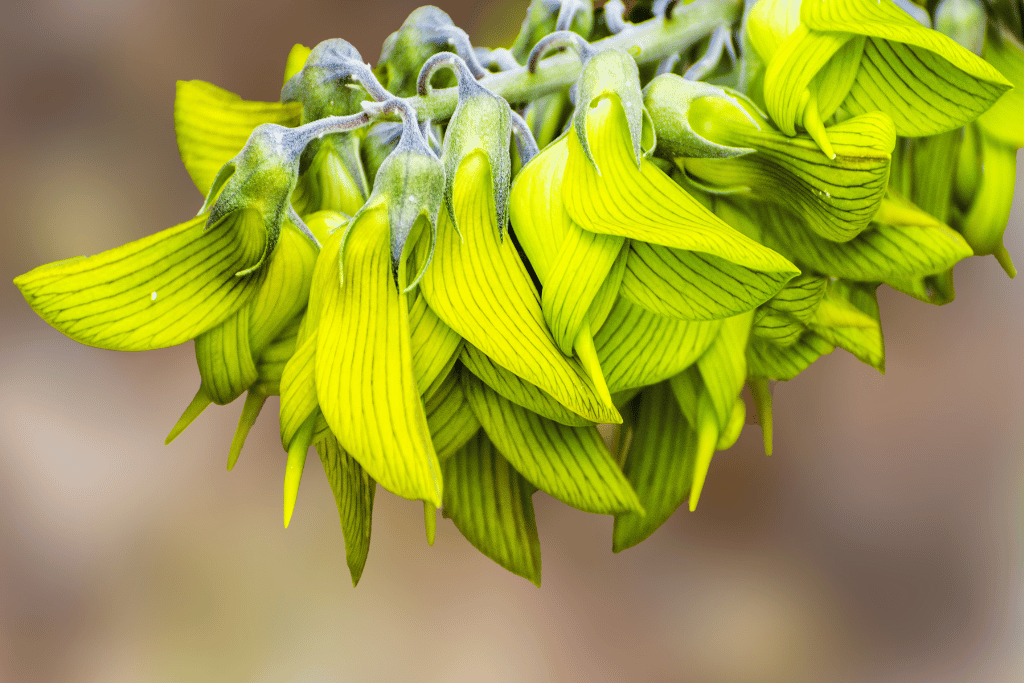
This plant isn’t just a pretty face- the green bird flower is a legume that fixes nitrogen to the soil and helps improve soil quality. When in bloom, the green bird flower displays bright yellow flowers with a slender beak-like structure, making it look like a bird in flight.
Taking care of this bird-shaped beauty is effortless and relies on a sunny spot with well-draining soil.
Be careful with this one though- the Green Bird flower and its relatives are highly toxic to livestock, so keep it out of reach of any furry or feathered friends. If you are searching for a plant that is just as quirky as it is gorgeous, the green bird flower will definitely make your garden the talk of the town!
| Common Name | Green Bird Flower, Bird Shaped Flower |
| Scientific Name | Crotalaria cunninghamii |
| Origin | Australia |
| Family | Fabaceae |
| Type | Evergreen shrub |
| USDA Hardiness Zone | 9-11 |
| Temperature | 60-80F (15-27C) |
| Humidity | 60-70% |
| Soil | Well-draining soil, pH 6.0 -7.5 |
| Light | Full Sun to Part shade |
| Fertilizer | 10-10-10 NPK- Once a month during the growing season |
5. Large Duck Orchid –Calaena Major

Australia is home to many wild orchids, and this one looks like a tiny duck’s head entirely with a beak and feathers. The blooms appear in the late spring to early summer months, and its flowers are displayed for several weeks. Although it is an orchid, it is terrestrial, meaning it grows on the ground rather than on trees or plants like some other orchid species.
Whether you are an orchid enthusiast or are just looking for a dainty bird-looking plant for your garden, the Large duck orchid will make a fascinating addition to your garden.
| Common Name | Large Duck Orchid |
| Scientific Name | Calena Major |
| Origin | Australia |
| Family | Orchidaceae |
| Type | Terrestrial Orchid |
| USDA Hardiness Zone | Not applicable- it is a tropical plant that doesn’t tolerate frost. |
| Temperature | 60-80F (15-27C) |
| Humidity | 50-70% |
| Soil | Well-draining soil, pH 5.5 -7.5 |
| Light | Full Sun to Part shade |
| Fertilizer | 10-10-10 NPK- Twice during the growing season |
6. White Egret Flower –Pecteilis Radiata
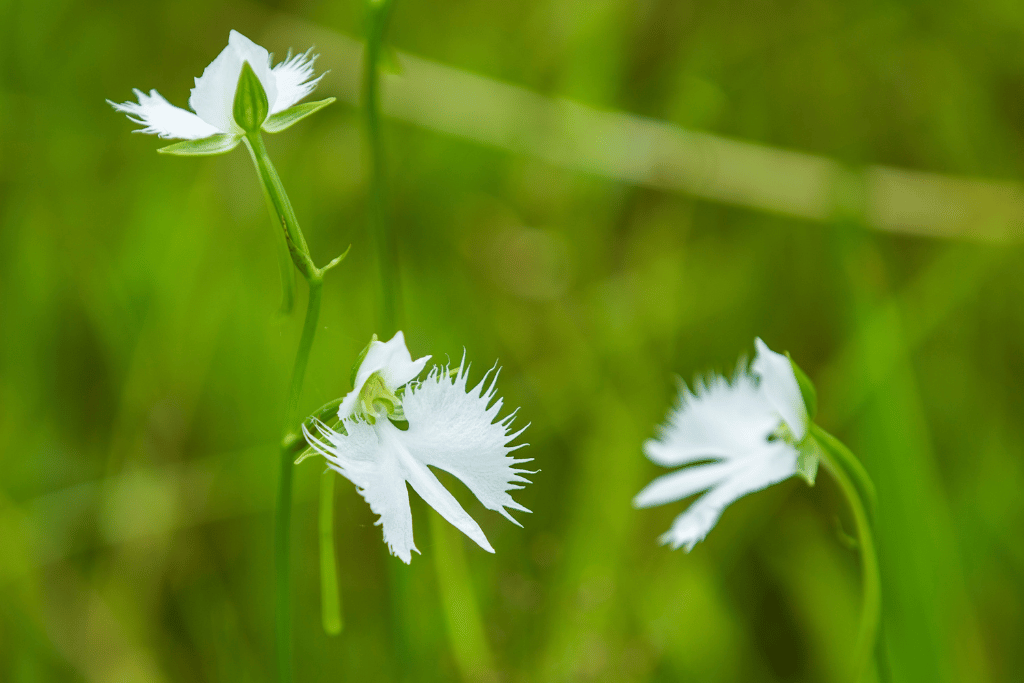
If you’re looking for a fancy plant to make a statement, then look no further than the White Egret Flower. Also referred to as Pecteilis Radiata, this orchid is a real head-turner. The dainty white flowers resemble the elegant feathers of an Egret bird.
When in full bloom, it makes you feel like you have a bird sanctuary right in your home! Contrary to its fancy appearance, the egret flower is actually a pretty easy plant to look after. It does require higher than normal humidity levels, so you may need to give it a mist of water or run a small humidifier.
The Egret flower is worth a shot if you are looking for a plant with bird-looking flowers and want to try something new!
| Common Name | White Egret Flower |
| Scientific Name | Pecteilis radiata |
| Origin | East Asia |
| Family | Orchidaceae |
| Type | Terrestrial Orchid |
| USDA Hardiness Zone | 5-9 |
| Temperature | 65-80F (18-27C) |
| Humidity | 70-80% |
| Soil | Well-draining soil, pH 6.0 -7.5 |
| Light | Bright indirect Light |
| Fertilizer | 20-20-20 NPK- Orchid Fertilizer diluted to half strength once every two weeks |
7. Barrenwort – Epimedium Songbirds
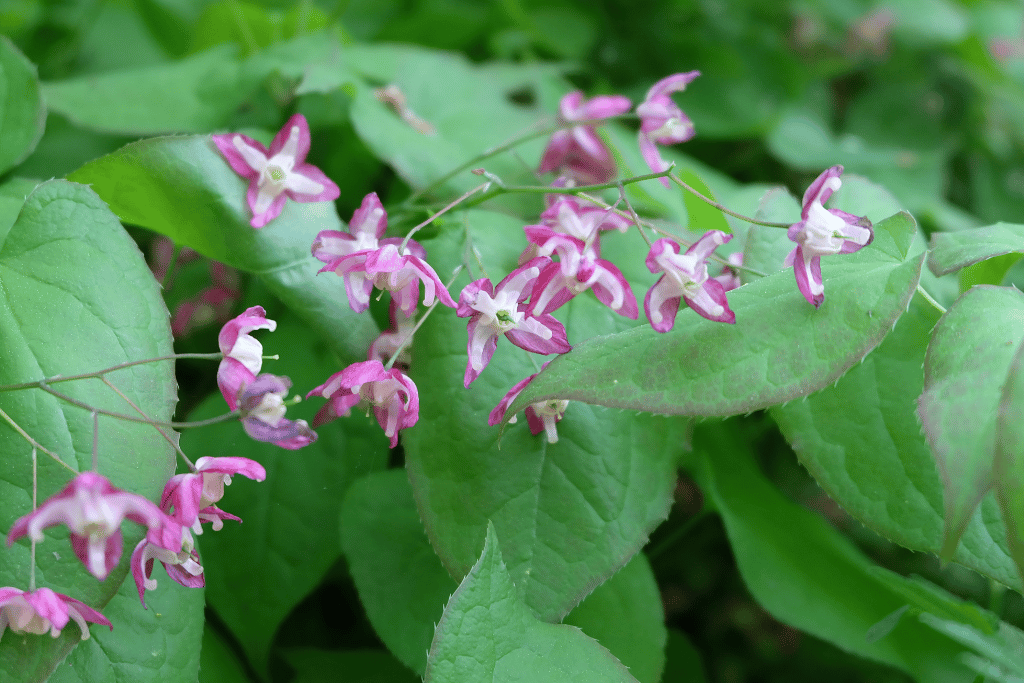
The Epimedium Songbirds have made their way into gardens worldwide with their unique, attractive flowers.
Grown as a groundcover the barrenwort spreads its rhizomes creating a blanket of dense heart-shaped leaves. This plant is as tough as nails and can handle a range of growing conditions making it ideal for gardeners that want a low-maintenance plant.
The delicate-looking flowers come in a range of pink yellow and white hues and resemble tiny swallow birds. The flowers are holding a sweet fragrance which makes them great to plant near an entrance or along the side of a driveway.
| Common Name | Barrelwort, Bishops hat, barrenwort |
| Scientific Name | Epimedium songbirds |
| Origin | Asia and Europe |
| Family | Berberidaceae |
| Type | Perennial groundcover |
| USDA Hardiness Zone | 5-9 |
| Temperature | Winter- -30-20F (-34–6C) summer 70-80F (21-27C) |
| Humidity | 50-70% |
| Soil | Well-draining soil, pH 6.0 -7.5 |
| Light | Full Sun to Part shade |
| Fertilizer | 10-10-10 NPK- every 2-3 weeks during the growing season |
8. Yulan Magnolia- Magnolia denudata
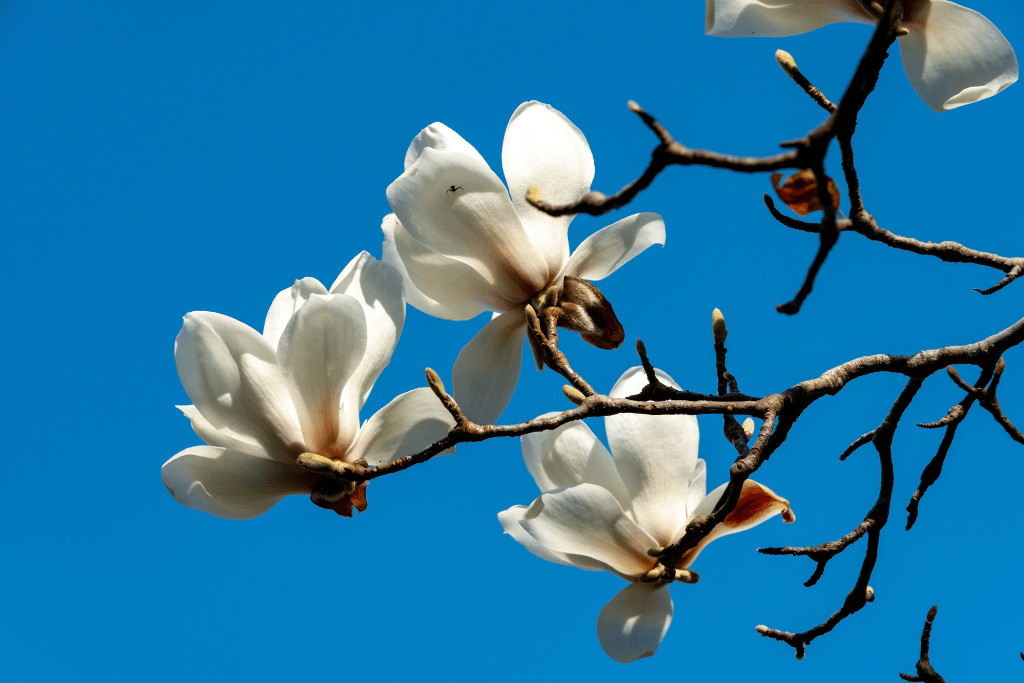
The Yulan Magnolia is a real looker with is large showy flowers and glossy green foliage. Dont let its looks deceive you though it’s a tough plant that can handle a range of growing conditions.
The flowers of the Yulan Magnolia consist of long slender petals that resemble a bird in flight. In the center of the flower, the stamen extends to give the impression of a bird’s beak or tail feather. As the blooms arrive in early spring, they fill the air with a sweet fragrance.
Apart from its fabulous flower display, the Yulan magnolia has other great features too. The foliage is deep green and has a glossy sheen making them look unreal! As fall arrives the leaves turn a golden yellow creating a whole new look.
| Common Name | Yulan Magnolia |
| Scientific Name | Magnolia denudata |
| Origin | China |
| Family | Magnoliaceae |
| Type | Deciduous tree |
| USDA Hardiness Zone | 6-9 |
| Temperature | 60-80F (16-27C) |
| Humidity | 50-80% |
| Soil | Well-draining soil, pH 5.5 -6.5 |
| Light | Full Sun to Part shade |
| Fertilizer | 10-10-10 NPK- Twice during the growing season |
9. Moon Orchid- Phalaenopsis Orchid
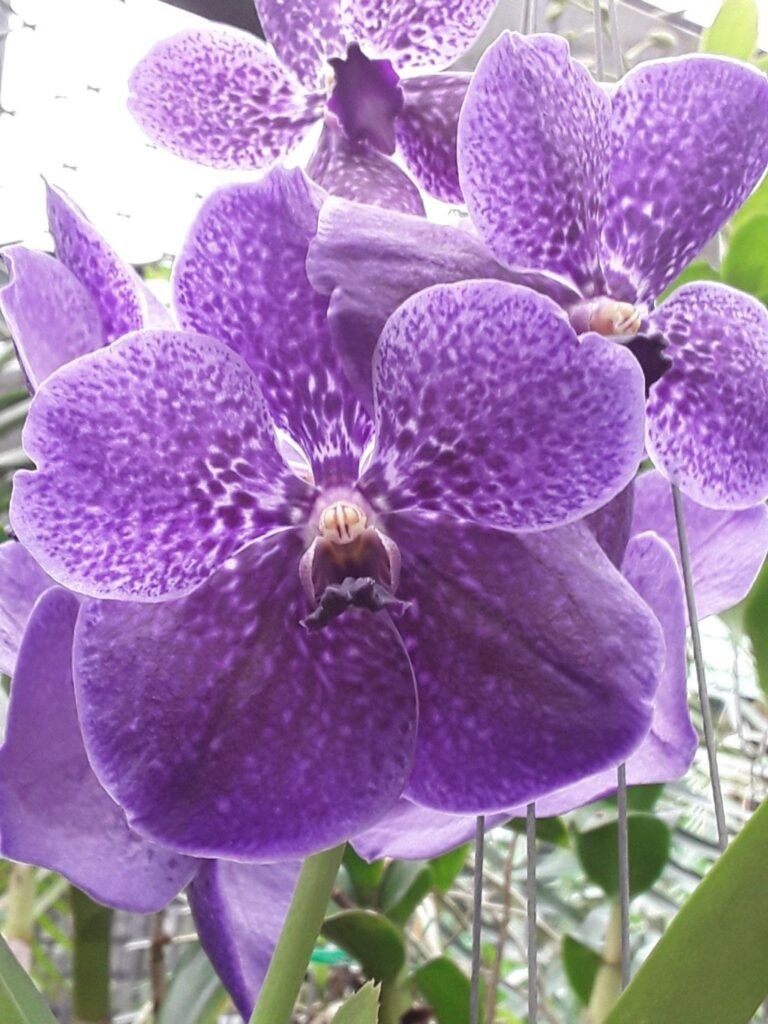
At first glance, you can’t see the bird-like features of the iconic Phalaenopsis orchid, but when looking a little closer, you can notice the small dove at the entrance of the throat of the flower. The Moon orchid is a real showstopper in the plant world and brightens up the room with its spike of colorful blooms.
Once a rare plant to find, they are now being cultivated around the globe and are perfect for even the most novice gardeners.
The moon orchid is a diva with watering requirements, so giving it a drink once a fortnight is sufficient. Because it is an epiphyte, its roots can be used to climb trees while taking moisture and nutrients from the air.
| Common Name | Moon Orchid, Moth Orchid |
| Scientific Name | Phalaenopsis orchid |
| Origin | South Eats Asia |
| Family | Orchidaceae |
| Type | Epiphyte |
| USDA Hardiness Zone | Tropical plant that doesn’t tolerate freezing temperatures |
| Temperature | 65-80F (18-27C) |
| Humidity | 50-70% |
| Soil | Well-draining orchid mix |
| Light | Bright Indirect Light |
| Fertilizer | 20-20-20 NPK- Diluted half strength and applied every two weeks |
10. Canary Creeper- Tropaeolum peregrinum
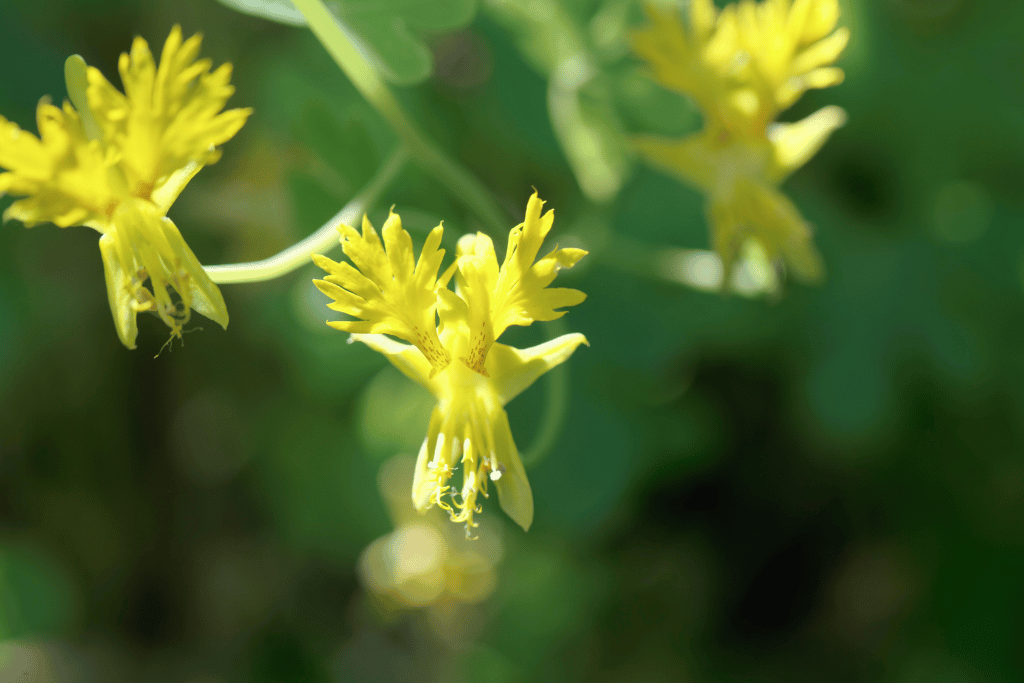
The Canary Creeper is sometimes known as the canary-bird vine because it boasts bright yellow flowers that mimic the wings of a bird. The curved spur at the base of the flower looks like a bird’s beak, hence its avian nickname.
One of the significant aspects of the canary creeper is that it will grow upwards and climb a trellis or structure, allowing you to create a whole wall full of tiny yellow birds!
The canary creeper has a laid-back approach to life and can thrive in a range of different soils and sunlight conditions. These features make this bird vine the perfect addition to the garden.
| Common Name | Canary Bird Vine, Canary Creeper |
| Scientific Name | Tropaeolum peregrinum |
| Origin | South America |
| Family | Tropaeolaceae |
| Type | Climbing vine that will reach 6 feet tall |
| USDA Hardiness Zone | 9-11 |
| Temperature | 60-75F (15-24C) |
| Humidity | 40-60% |
| Soil | Well-draining soil, pH 6.0 -7.5 |
| Light | Full Sun to Part shade |
| Fertilizer | 10-10-10 NPK- Every 2 -4 weeks during the growing season |
From Tweet to Tree: The World of Avian Lookalikes!
With so many plants that look like birds, you are bound to find one to suit your garden. The natural beauty of these plants that grow flowers that look like birds creates a playful look while capturing your imagination.
Not only do they provide an aesthetic talking point, but they are fantastic for attracting all types of fauna to your garden.
These bird-looking plants are beautifully functional, so why not go ahead and spruce up your garden with one today?


